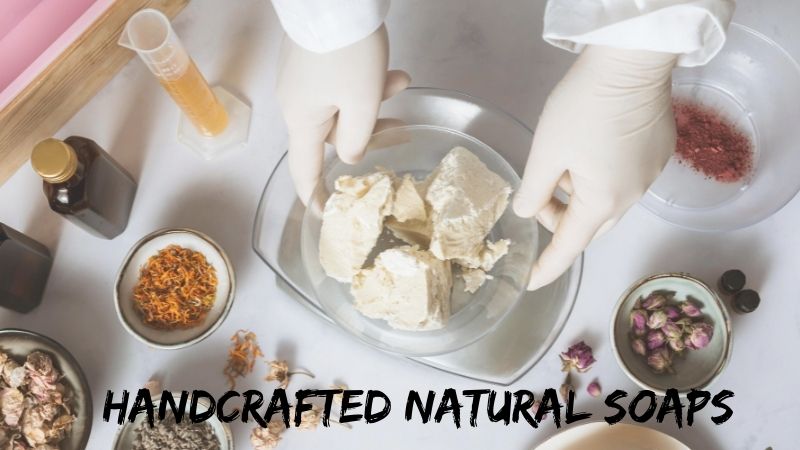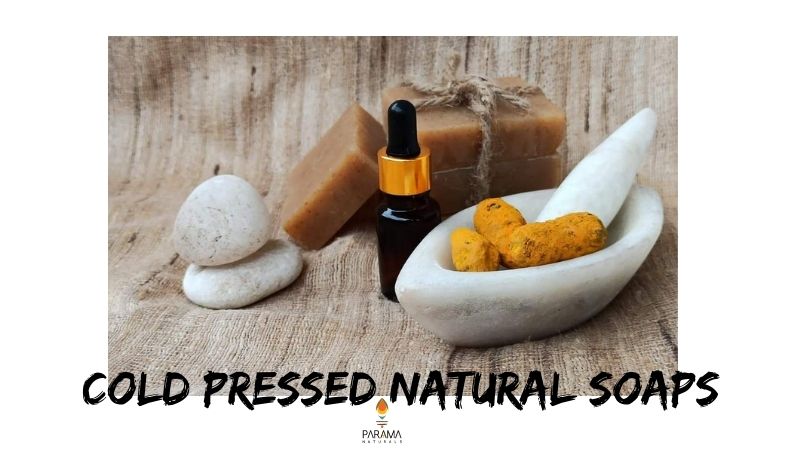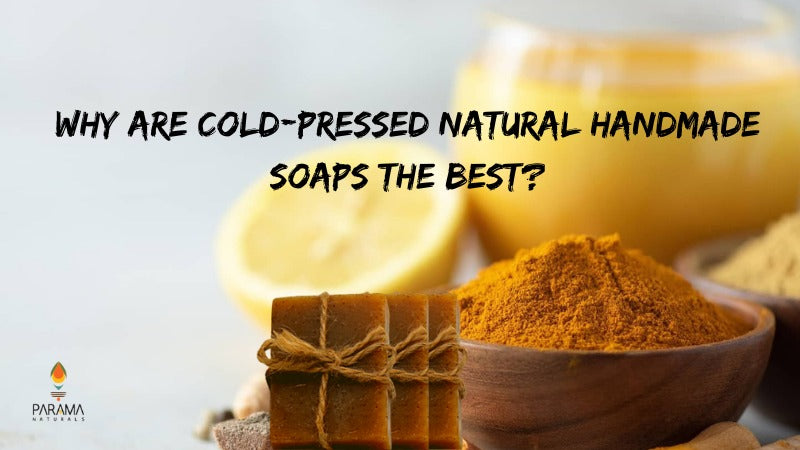Three Critical Soap-Selection Criteria
WHAT ARE SOAPS?
How many of us make an informed decision while choosing a soap bar amongst the plethora available in the market? To be honest, like most other young girls, I never put much thought into the process and just bought one that had a pretty face promising a lingering fragrance and soft skin in its advertisements (whether it delivered on the promise or not is a completely different story!!). It was only later on in life that I realized how important it is to choose the right one since it comes in contact with our skin a number of times each day.
In a discussion with Dr Bhawna Mangalmurti, a trained organic chemist who is passionate about soap-making, I learnt all about soaps, the soap making process, the ingredients used and how we should choose our soaps. I share with you excerpts from the discussion in this blog.
According to the Merriam Webster Dictionary, a soap is "a cleansing and emulsifying agent made usually by action of alkali on fat or fatty acids and consisting essentially of sodium or potassium salts of such acids" and "a salt of a fatty acid and a metal".
Typically used for cleansing and lubricating, bath and/or beauty soaps were originally made using natural ingredients of animal or vegetable fats and lye (caustic soda, sodium hydroxide or potassium hydroxide), which occurred in nature when ash and water were mixed for a long duration.
The main component of a soap is a surfactant--a compound that lowers the surface tension between things. In soaps, it has two main actions—
It mixes with the dirt or oil and removes it from a surface, thus cleansing it,
It emulsifies water and oil making it easier to mix oil and water in soaps and cosmetics.
Surfactants can form naturally during the saponification process of lye and oil or can be added as chemicals.
COMMERCIAL SOAPS
In commercially-made soaps, typically, there is no oil or any natural ingredients. They are usually made using paraffin, Carbopol and artificial waxes. These soaps contain many chemicals, artificial harmful colours, sulphates, stearic acid, and a lot many harmful preservatives. Some usual ones are as follows:
SLES (sodium lauryl ether sulphate) and sodium cocoyl isethionate – these are used as detergent and surfactant to create extra lather
Tetra sodium etidronate EDTA - allows soap to lather in hard water
Aluminium oxide or alumina – works as an abrasive and an anti-caking agent
Lauric acid – it is used as a substitute for oil (though it is naturally present in vegetable oils)
Sodium palmitate - for the saponification process
Parabens - added as a preservative
Titanium dioxide - to get white colour
Sodium lactate - to harden the soap and ensure it doesn't get soft when kept in water. Makes the soap last longer.
Rubbing alcohol - to give a translucent look to the soap
Other ingredients that may be added are zinc oxide, sodium stearate, cocamidopropyl betaine and fragrance, most often, synthetic perfumes
Many of these chemicals have short term reactions like skin irritation, or can cause long term inflammation and other side effects. When washed off, these chemicals also pollute the ground water and water bodies, and harm the aquatic and plant life.
CRITERIA FOR SOAP SELECTION
While a soap just seems to be a "mere soap" and we don't think much about them when choosing them, it is imperative that we check for the following 3 things:

pH balance - the wrong pH balance can lead to skin irritation in the short term
Drying effect - many soaps rob the skin of its natural moisture, leaving pores open to inflammation and infection
Added chemicals - these may have short- and long-term side effects on us like skin irritation, allergic reactions or even metabolic disorders
HANDCRAFTED NATURAL SOAPS

Handcrafted, natural soaps are made using mainly three types of processes:
1. Melt and Pour Method:

This is the easiest method of making handcrafted soaps. A commercially prepared soap-base is purchased, then melted and mixed with colours, scents etc. and poured into moulds.
Advantages:
1. Easy to make
2. Smooth finish because the soap base is attractive to look at.
Other elements like colours and fragrances and additives like natural exfoliators or clays or oils and essential oils can be added to enrich the soap base.
These soaps can bridge the gap between commercial soaps and natural soaps to some extent.
Disadvantage:
There is not much control over quality of soap base as it's purchased readymade. It is therefore tough to determine whether any chemical additives are used.
2. Cold Process Method:

This is the ancient traditional way of making soaps from scratch starting with natural oils and fats, lye, scents, colours, etc.
Advantages:
Starting from scratch means that the quality of oil used can be controlled. We can also ensure the quality of lye and that other chemicals like titanium dioxide or rubbing alcohol are not added to the soap mix.
The natural glycerine is retained in this method, which means that the soap has good moisturising properties.
The long curing time ensures better quality, completely nullifies the caustic soda effect and ensures that the pH balance of the soap is maintained.
Disadvantages:
Difficult, time-consuming process which requires a lot of fine tuning to create the soap with the least possible quantity of lye and highest quantity of oils.
A great amount of effort goes into creating a formulation that gives as much lather that people are used to in commercial soaps.
Soaps created using this method are also not aesthetically appealing.
3. Hot Process Method:

Similar to the Cold Process method above, here the mixture is heated till glycerine separates. Glycerine has commercial value and it is separated out. In glycerine soaps, the process is typically the hot process one, and glycerine is added externally.
Advantage: This process is much cheaper than the cold process one.
Disadvantage: Removal of glycerine makes the soap drying for skin.
WHY ARE COLD-PROCESSED NATURAL HANDMADE SOAPS THE BEST?
So, while the most ideal cleansers would be those using natural surfactants like soapnut or soapberry (reetha), soaps made using the Cold Process, if done carefully, can ensure that there are no trace elements of the caustic soda used in the end product. In these soaps, caustic soda just acts as an agent for the saponification process. Formulated well, they take care of the pH balance and can be moisturising despite the cleansing action, and with no added chemicals.
Thus, if possible, use carefully formulated hand-crafted cold-processed soaps - they are the closest to being natural!

The Parama Naturals’ Cold-processed Turmeric Soap uses Virgin Cold-pressed Coconut Oil, Cold-pressed Oils of Sesame and Castor and Unrefined Kokum Butter along with Turmeric Extract. All these ingredients retain their innate properties to nourish and hydrate the skin without depleting it of its natural oils.
Our soaps are PH Balanced and absolutely safe for hypoallergenic skin.
We add no artificial colours or fragrances and the soaps are completely Handmade and Cold-processed. Try them out once and feel the difference.
To buy our Handmade, cold-pressed soaps, click here.
